Artifacts -
Tools
Click an artifact's image or name to view it.
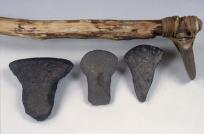
|
circa 1000 BCE - 300 BCE
Native women used tools like these for breaking up the soil and hoeing between plants. |

|
circa 6000 BCE - 3700 BCE
A bifacial blade was a stone tool used to process and skin animals after they had been killed. |
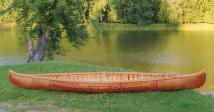
|
modern reproduction
This reproduction birchbark canoe is based on a form used in the 1700s in the Connecticut River Valley and other parts of the Northeast where Wobanakiak were building canoes. |
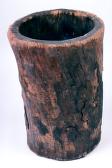
|
circa 1700 - 1800
Wooden mortar and pestles were used by Native Americans for grinding corn into meal and flour. |

|
1800 - 1900
Leisters (three-pronged fishing spears) were useful for snaring salmon, sturgeon, and other species during their spawning runs. |
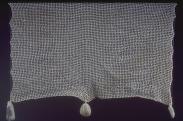
|
modern net
Plummets or weights were used to force a fishing net to sink in the water to catch fish. |

|
circa 5000 B.C.E
Stone axes were used for felling trees and for woodworking. |
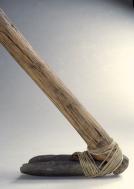
|
modern haft
The size of this gouge indicates its use in large woodworking projects, such as creating dugout canoes. |

|
circa 5000 B.C.E
These specialized tools were used by Native Americans to "perforate" or put holes in leather, bark and wood. |
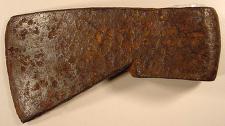
|
circa 1600 - 1700
The shape of this trade axe and its asterisk marks are typical of French trade axes of the 17th century. A medium-sized axe of this type would have been practical for carrying as a tool or weapon during the 1704 raid on Deerfield, Massachusetts. |
![]()
![]()